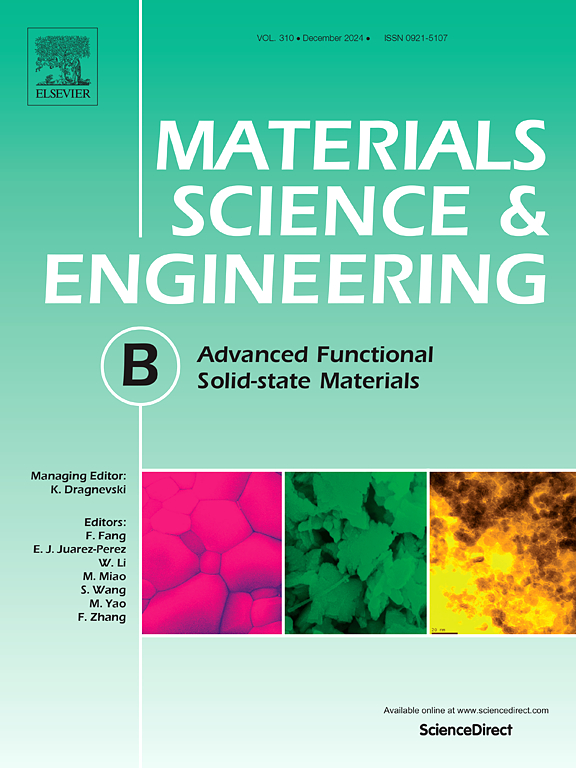The LiF doping effects on the microstructure, ferroelectric and electrocaloric properties of (Na, K, Li)(Nb, Sb, Ta)O3 −based ceramics sintered in air atmosphere and reduced atmosphere
IF 3.9
3区 材料科学
Q2 MATERIALS SCIENCE, MULTIDISCIPLINARY
引用次数: 0
Abstract
In this study, the microstructure, electrical properties of the lead-free (Na0.52K0.4425Li0.0375)(Nb0.8925Sb0.07Ta0.0375)O3 (NKLNTS) + 2.0 mol% MnCO3 + y mol% LiF (y = 0 ∼ 3.0) ceramics sintered in air and reduced atmosphere are investigated. Both the density and grain size increase as y = 1. The samples sintered in air showed ΔT = 1.02 K of 30 kV/cm at 313 K. This is because introducing low radius Li+ ions forms an A-site substituted cell structure and changes the internal lattice stress, thus improving the polarization and electrocaloric performance. In contrast, sintered in a reduced atmosphere shows a negative effect of −0.812 K due to the enhanced polarization of defect dipoles, offsetting the decrease in maximum polarization, causing the maximum polarization to increase with increasing temperature. In addition, the observation of defect relaxation phenomena contributes to a wider operating temperature range. This is an important step towards refrigerating ferroelectric ceramics sintered in a reduced atmosphere.
求助全文
约1分钟内获得全文
求助全文
来源期刊

Materials Science and Engineering: B
工程技术-材料科学:综合
CiteScore
5.60
自引率
2.80%
发文量
481
审稿时长
3.5 months
期刊介绍:
The journal provides an international medium for the publication of theoretical and experimental studies and reviews related to the electronic, electrochemical, ionic, magnetic, optical, and biosensing properties of solid state materials in bulk, thin film and particulate forms. Papers dealing with synthesis, processing, characterization, structure, physical properties and computational aspects of nano-crystalline, crystalline, amorphous and glassy forms of ceramics, semiconductors, layered insertion compounds, low-dimensional compounds and systems, fast-ion conductors, polymers and dielectrics are viewed as suitable for publication. Articles focused on nano-structured aspects of these advanced solid-state materials will also be considered suitable.
 求助内容:
求助内容: 应助结果提醒方式:
应助结果提醒方式:


